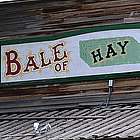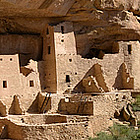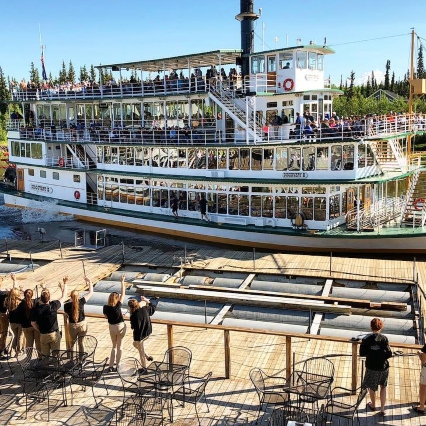Desert delights
From dinosaur tracks to dormant volcanoes, there were many intriguing sights to see
Our seventh week on the road found us headed south of Dodge City, into New Mexico. It was flat road in the desert, with little change. Our first stop was at the small town of Clayton. We stayed at the Clayton Lake State Park. The lake is bordered by small rock bluffs that drop directly into the water, making for a very beautiful shoreline. The lake, however, is quite low as this part of the country has had no significant rainfall for over a year—I am told less than two inches of rain since June of 2010.
The ranchers are selling off their cattle and the price of feed has skyrocketed. The town of Clayton is famous (or infamous) for a couple of reasons. At the Clayton Lake State Park a very large discovery of dinosaur footprints was found during the excavation of earth for a dam site in 1956. The dinosaur footprints can easily be seen as you walk along the boardwalk in the park. They were made 100 million years ago. The tracks are unique because they show a diamond shaped footprint with a heel impression that was left by a web-footed dinosaur.
Most dinosaurs did not leave this type of footprint. It also left tail drag marks, which most known dinosaurs did not leave at they walked with their tails up. This dinosaur has yet to be named. Another set of prints shows claw marks left by a giant saltwater crocodile propelling itself through shallow water.
A storied past
Another fact about the town of Clayton is that "Black Jack Ketchum" was hanged here in 1901 for attempted train robbery.
The Cimarron cut-off branch of the Santa Fe Trail passed through Clayton. Later the arrival of the railroad made Clayton a destination point for cattle drives from the south, for the shipment of cattle to the east. Later in the day we drove to Dalhart, Texas, a mid-sized town about 45 miles to the east—just to say we have been in Texas on this trip.
We then travelled to Capulin, New Mexico, which is the location of the extinct Capulin volcano. The volcano first erupted 60,000 years ago spewing molten rock and ash for about 15 square miles. This is now a perfectly shaped volcanic cone complete with a deep centre crater, rising 2,200 feet above the plains below to a height of 8,182 feet above sea level. We drove the two miles up the side of the volcano to a parking area at the top.
A one-mile trail circles the very rim of the volcano and a shorter trail leads to the centre vent. This is now plugged with volcanic debris, making the volcano dormant. From the top we could see about 150 miles in all directions. Many plants and prairie grasses now cover the sides of this extinct volcano.
We travelled on and spent the night at Sugarite State Park near Raton, New Mexico. As we were having some trouble with our landing jacks on the fifth wheel, the campground hosts called an RV repair firm in Raton and made an appointment for us to have our RV repaired. What wonderful people. We found out the worm gears in the jacks were worn out and need replacing. Fortunately the bill was not as high as we expected.








